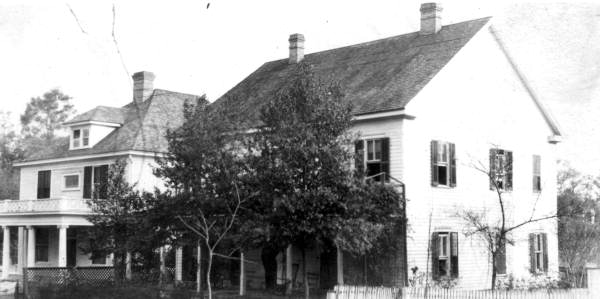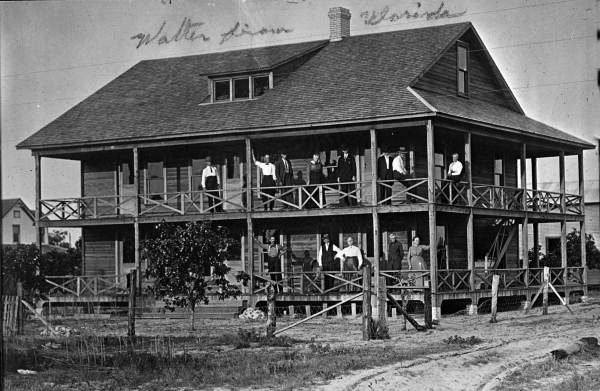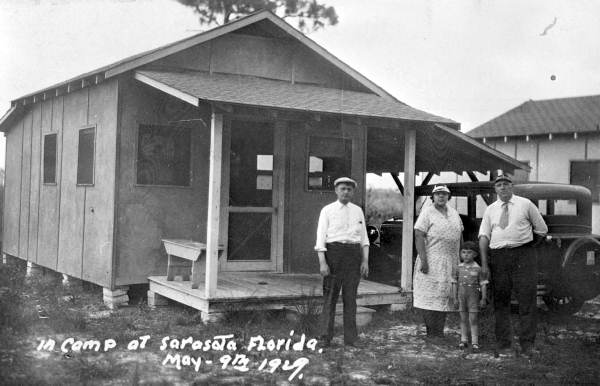Description of previous item
Description of next item
Room and Board
Published October 10, 2015 by Florida Memory
During the 19th century, developers, railroad magnates, and other enterprising businessmen peppered Florida with hotels to house the state’s growing number of visitors. These establishments ranged from modest inns to palatial resorts built by the likes of Henry Flagler and Henry Plant. But where could you stay if you couldn’t afford a room in one of these hotels? Or, what if you were traveling for work and just needed a place to crash rather than to be entertained? The answer for many visitors was to stay in a boarding house.
Boarding houses were the go-to low-cost accommodations for locals and visitors traveling around Florida in the 1800s. They could be standalone businesses, or they might be combined with a post office, a general store, or some other business. Some Floridians even operated boarding houses out of extra rooms in their private homes.
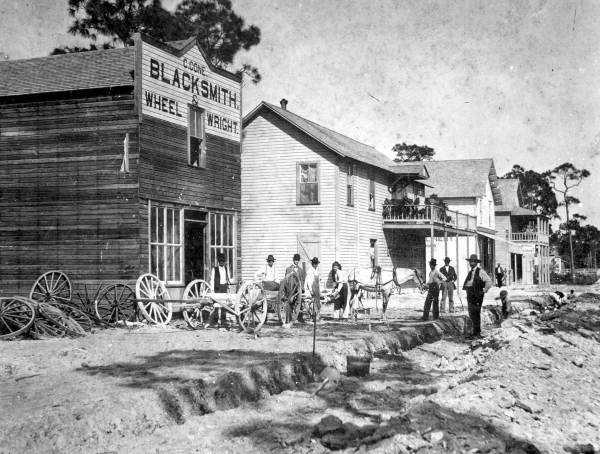
North Miami Avenue in Miami (1896). The building second from the left contained a store owned by T.N. Gautier on the ground floor and a boarding house on the second floor run by Gautier’s wife.
Boarding houses were advertised just as widely as hotels, but they had a few differences. The furnishings in the rooms were usually simpler, and there were generally fewer amenities and services. Proprietors often served meals family style, with boarders eating together at a single table rather than in their own private groups. That’s not to say the food was dull – far from it. While Florida’s boarding houses might not have been serving four-course meals with all the trimmings, guidebooks and advertisements reveal that the quality of the food was a critical component of a house’s reputation. Advertisements often referenced the house’s “excellent table,” or listed the fresh foods served daily.
The trade-off for offering limited services, of course, was the lower price tag for a stay at the boarding house. At Fernandina in 1884, for example, a night at the Egmont Hotel cost $4, while a night at most of the town’s boarding houses was only $2. On top of that, many proprietors would cut boarders a deal if they committed to a week’s stay. A $2 difference may seem negligible today, but keep in mind we’re talking about 19th century dollars. Adjusted for inflation, that $2 jump in price for a night at the Egmont represents about a $50 price difference! No wonder so many folks were staying at Florida’s boarding houses when they traveled.
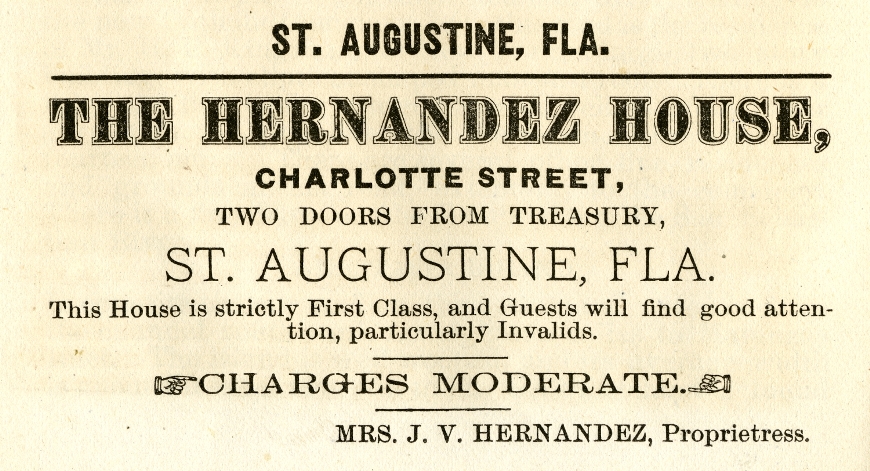
Advertisement for the Hernandez House in St. Augustine, printed on page 104 of H.D. Bicaise, A Guide to the Land of Flowers (Charleston: Parry, Cook & Co., 1878). A copy of this guidebook is available in the State Library’s Florida Collection.
Boarding houses remained popular into the 20th century, although new establishments eventually superseded them as the primary low-cost lodging options. Motels and campgrounds became especially popular with automobile owners, who were looking for cheap and convenient options along the roadways.
Do you know of any boarding houses that once existed in your community? When were they in operation? Start a conversation by sharing this post with your friends and family on Facebook and Twitter.
Cite This Article
Chicago Manual of Style
(17th Edition)Florida Memory. "Room and Board." Floridiana, 2015. https://www.floridamemory.com/items/show/297527.
MLA
(9th Edition)Florida Memory. "Room and Board." Floridiana, 2015, https://www.floridamemory.com/items/show/297527. Accessed January 7, 2026.
APA
(7th Edition)Florida Memory. (2015, October 10). Room and Board. Floridiana. Retrieved from https://www.floridamemory.com/items/show/297527

 Listen: The Assorted Selections Program
Listen: The Assorted Selections Program
